The Oxford Association before 1900 (Mar 2019)
In Mar 2018 we surveyed Irish Cambridge connections "up to 1900". This month, we do likewise for Oxford. It's a much less expansive story, as only a dozen people are documented here (the Cambridge version had almost 70). However, key people such as Henry Smith, Francis Edgeworth, John Campbell, Arthur Conway and William Gosset are included. In 1879, Smith's sister Eleanor played a role in the founding of Oxford's first women's college, Somerville. We are not currently aware of any Oxford association for any women in maths in the Irish context, pre 1900.
Additions, comments and corrections are welcome, as always. More images of the forgotten faces from the past would also be appreciated.
Thanks to Paul Greaney (Galway) and Olivia Bree (SPD) for valuable input. Last updated 14 September 2021.
 |
1. Physician Charles Willoughby (1630?-1694) may have been born in Cork. He was educated briefly at TCD and Cambridge before getting degrees from Oxford (BA 1649, MA 1652) and Padua (medicine 1664). He was a member of the Irish College of Physicians, and a key early member of the Dublin Philosophical Society (to which he contributed paper on maths and physics) and the Royal Society. He practiced as a doctor in Dublin and also taught at TCD, serving as Donegall Lecturer in Mathematics 1692-1694. |
 |
2. Narcissus Marsh (1638-1713) was born 20 December in Hannington, Wiltshire, England, and was educated at Oxford (Magdalen BA 1658). His career was mostly spent as a clergyman, first in England, and later in both Ireland and England. In between, he served as provost at TCD (1679-1683), and during his time there he promoted the study of Irish. He was an early member of the Dublin Philosophical Society. He enjoyed research in mathematics, dynamics and acoustics, and is credited with coining the word microphone in 1683. Dublin's library named after him was set up in 1707, at his own expense. Wikipedia / TCD / Library / 1998 Overview |
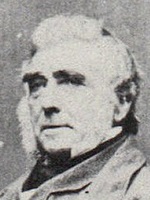 |
3. Astronomer Edward Cooper (1798-1863) was born in May in Dublin and attended but did not graduate from Oxford. His early years were spent travelling and honing astronomical skills. In 1831 he took over his late father's Markree Castle in Sligo, and started developing what would become Markree Observatory. In his life, which was also dominated by the landlord politics of the era, he was responsible for a great amount of astronomical observations and calculations. |
 |
03B. Astronomer William Parsons (1800-1867) was born 17 June in York, England, to a Parsonstown family, and grew up at the family homestead, Birr Castle. He was educated first at TCD (who later awarded him MA 1832, LLD 1863) but after 2 years switched to Oxford (Magdalen, BA 1822). He then entered politics, being MP for King's County for several terms, meanwhile turning from maths to astronomy and engineering. He commenced an ambitious programme to construct large reflector telescopes at Birr Castle. By the mid 1840s, his "Leviathan" was complete, which for over 70 years held the title of the world's largest telescope. He also served as chancellor of TCD (1862-1867). Wikipedia / Hermathena / DIB / Enc Brit |
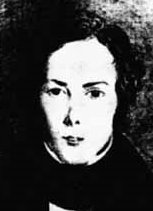 |
4. John Graves (1806-1870, brother of Charles) was born 4 December in Dublin. He studied science and classics at TCD (BA 1827, MA 1832) as a classmate and friend of Hamilton, and at Oxford (Oriel MA 1831), and then pursued a career in law in London. Throughout, he maintained a parallel career as a mathematician and avid collector of maths books and pamphlets. One of his notable discoveries, from late 1843, was octonions, an extension of Hamilton’s quaternions. |
|
5. William Penny (1814-1892) was born 4 August in Addingham, Yorkshire, England, and was educated at Oxford (Christ Church BA 1837, MA 1839). He was a clergyman (and friend of John Newman) before teaching at Catholic University, Dublin 1860-1873. Papers / Scholar / Conversion |
|
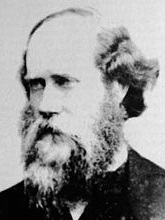 |
6. Henry Smith (1826-1883) was born 2 November in Dublin and grew up in various parts of England. He was educated at Oxford (BA 1849) and spent most of his career there (Balliol). His work included explorations in Riemann integration, linear algebra, quadratic forms, and number theory. He is remembered being the first to find the number of ways that an integer can be expressed as the sum of k squares, and for the Smith–Minkowski–Siegel mass formula, and for the Smith normal form of a matrix. He gave a description of a Cantor-like set 8 years before Cantor. Wikipedia / MacTutor / Theodora / Cantor Set |
 |
7. Statistician and economist Francis Edgeworth (1845-1926) was born 8 February in Edgeworthstown, Longford. He was educated at TCD (BA languages 1865) and at Oxford (law 1877). He taught at King's College, London (1880-1891) and Oxford (1891-1922). |
 |
8. Mathematician, physicist, astronomer, and inventor George Minchin (1845-1914) was born 25 May (as George Smith) on Valentia Island, Kerry. He was educated at TCD (BA 1866, MA 1870), adopting his middle name Minchin as his last name while there. Most of his career was spent at the Royal Indian Engineering College (aka Cooper's Hill) (1875-1906), on the outskirts of London, and at Oxford (1906-1914). He wrote books on statics, kinematics, and mathematical drawing. He was a photometry pioneer. While he is sometimes credited with the term "potential function", George Green had introduced that in 1828. |
|
8B. Henry Moore (1853-1943) was born 11 December in Dublin, and was educated at Oxford (Balliol BA 1877, MA 1880). He was a clergyman in Cork before being appointed as principal at the C of I College of Education in Dublin (1884-1927). He contributed maths to the Educational Times. 1901 Census / 1911 Census / CICE / Edu Times / Son |
|
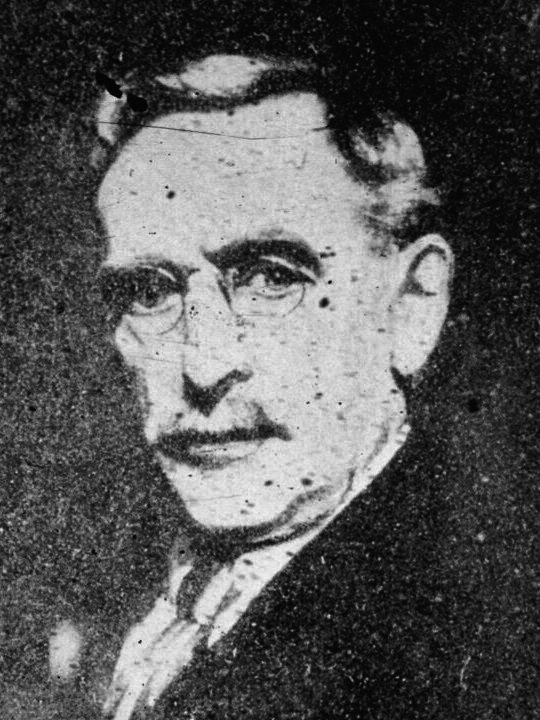 |
9. Astronomer Arthur Rambaut (1859-1923) was born 21 September in Waterford town and was educated at TCD (BA 1881, MA 1887, DSc 1892). His career was split between Dunsink (1882-1897), including stints as Royal Astronomer of Ireland and Andrews Professor of Astronomy at TCD, and Oxford Observatory. |
 |
10. John Campbell (1862-1924) was born 27 May in Lisburn, Antrim, and was educated at Queen's Belfast (BA 1883 or 1884), Oxford (Hertford, MA 1886) and RUI (MA 1887). His career was spent at Oxford, where he was an early supporter of women's education. He worked in Lie algebras and differential geometry, and wrote two influential books. |
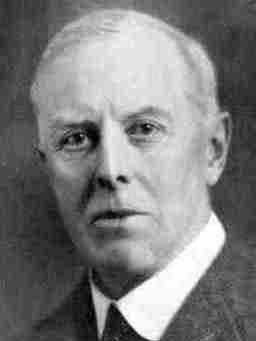 |
11. Mathematical and experimental physicist John Sealy Townsend (1868-1957) was born 7 June in Galway town. He was educated at TCD (BA 1890) and later (1895-1990) studied with JJ Thomson at the Cavendish Lab. He worked for over 40 years at Oxford, where he supervised doctoral students and authored 4 books. |
 |
12. Arthur Conway (1875-1950) was born 2 October in Wexford town, and was educated at UCD (BA 1896, MA 1897, DSc (hon) 1908). He won an RUI Travelling Studentship in 1898 and the following year went to Oxford where he studied under AEH Love. He spent 1901-1947 on the staff at UCD, rising to the rank of president. He had a great passion for quaternions, authored one of the very first books on relativity, and co-edited two volumes of the collected papers of Hamilton. MathSciNet / MacTutor / Wikipedia /UCD |
 |
13. Statistician William Gosset (1876-1935) was born 13 June in Canterbury, England, and studied chemistry at Oxford (BSc 1899). He then worked for 36 years at Guinness in Dublin, pioneering many statistical techniques. Wikipedia / MacTutor / American Statistician
|